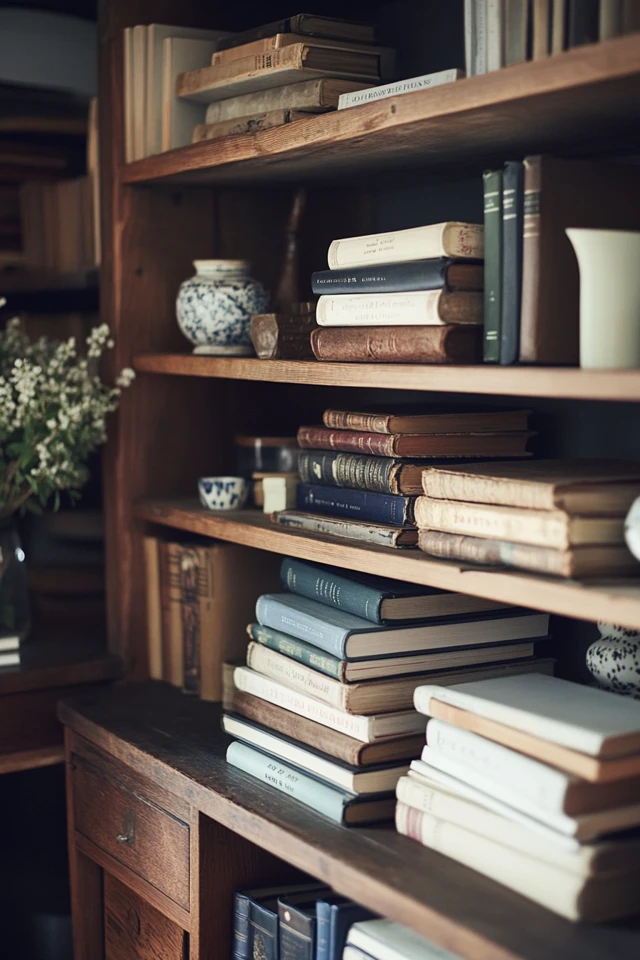Bookshelves are more than just a functional piece of furniture—they’re a canvas for creativity and self-expression. A well-arranged bookshelf can transform a room, showcasing your personality while serving as a focal point that draws the eye. The art of styling bookshelves goes beyond simply stacking books. It’s about finding a balance between form and function, creating a display that’s both practical and beautiful.
I’ll never forget the first time I transformed a cluttered bookshelf into a display-worthy centerpiece. It was a friend’s home, and their shelves were a jumble of paperbacks, souvenirs, and random objects. After a few hours of editing, arranging, and adding intentional decor pieces, their living room suddenly felt pulled together and polished. The power of a well-styled bookshelf is truly unmatched!
In this guide, I’ll share my favorite tips and tricks to help you arrange your bookshelves for a visually pleasing display that complements your space.
Why Does Bookshelf Styling Matter?
Bookshelves are often one of the first things people notice in a room. Here’s why styling them thoughtfully is essential:
- Creates Visual Balance: A well-arranged shelf adds harmony to your space.
- Showcases Your Personality: It’s an opportunity to display your interests, memories, and design taste.
- Enhances the Room’s Aesthetic: A beautifully styled shelf can act as a piece of decor in its own right.
1. Start With a Clean Slate
Why It Works:
Emptying your shelves allows you to approach the arrangement with a fresh perspective.
How to Do It:
- Remove everything from the bookshelf, including books, decor, and any accumulated clutter.
- Wipe down the shelves to create a clean surface for styling.
- Sort through your items, deciding what you want to keep, donate, or relocate.
Pro Tip: Group similar items together during the decluttering process—it’ll make arranging easier.
2. Anchor Your Display With Books
Why It Works:
Books are the foundation of a bookshelf, and their colors, sizes, and arrangements set the tone for the display.
How to Do It:
- Arrange books both vertically and horizontally for visual interest.
- Sort books by color for a cohesive look, or stick to neutral spines for a minimalist aesthetic.
- Use horizontal stacks as platforms for smaller decor items like vases or sculptures.
Pro Tip: Don’t feel the need to fill every inch of the shelf with books—leave space for decor and negative space.
3. Incorporate Decorative Objects
Why It Works:
Decorative accents add personality and break up the monotony of books.
How to Do It:
- Add objects like vases, sculptures, framed photos, or small plants.
- Vary the size and shape of the items for visual diversity.
- Use decor to reflect your personal style, whether it’s modern, rustic, or eclectic.
Pro Tip: Stick to a consistent color palette for decor items to create a cohesive look.
4. Create Balance With Height and Scale
Why It Works:
Balancing the size and height of items on your shelves prevents the display from looking lopsided or chaotic.
How to Do It:
- Place taller items, like vases or large books, on opposite sides of the shelf to create symmetry.
- Use stacks of books to add height to smaller objects.
- Alternate between larger, statement pieces and smaller accents for variety.
Pro Tip: Step back occasionally to assess the overall balance of your arrangement.
5. Layer in Textures and Materials
Why It Works:
Mixing textures and materials adds depth and keeps the display from feeling flat.
How to Do It:
- Combine smooth surfaces (like glass or ceramic) with rougher textures (like woven baskets or wood).
- Incorporate a mix of metals, natural materials, and soft textiles.
- Add a cozy touch with fabric elements like a folded throw or a stack of linen-covered journals.
Pro Tip: Use texture strategically to create contrast and interest within the display.
6. Add Greenery or Florals
Why It Works:
Plants and flowers bring life and movement to your shelves.
How to Do It:
- Place small potted plants or succulents on horizontal stacks of books or in empty spaces.
- Use trailing plants like pothos to soften the edges of the shelves.
- Add fresh or faux flowers in vases for a pop of color.
Pro Tip: Rotate plants occasionally to ensure they get enough light and stay healthy.
7. Incorporate Personal Touches
Why It Works:
Personal items make your bookshelf uniquely yours and tell a story about who you are.
How to Do It:
- Display meaningful mementos like travel souvenirs, family photos, or heirlooms.
- Frame small pieces of art or handwritten notes for an intimate touch.
- Use vintage books or objects to add character and charm.
Pro Tip: Limit the number of personal items to keep the display looking curated rather than cluttered.
8. Play With Negative Space
Why It Works:
Leaving some empty space on your shelves creates breathing room and prevents visual overload.
How to Do It:
- Avoid cramming every inch of the shelf with items.
- Group items together and leave gaps between clusters.
- Use negative space to draw attention to standout pieces.
Pro Tip: Experiment with asymmetrical arrangements for a more modern and dynamic look.
9. Use Lighting to Highlight Your Display
Why It Works:
Lighting enhances the beauty of your arrangement and creates a cozy ambiance.
How to Do It:
- Install LED strip lights or puck lights under each shelf for even illumination.
- Use decorative string lights for a whimsical touch.
- Position a nearby floor or table lamp to cast a soft glow on the shelves.
Pro Tip: Opt for warm white lighting to create a welcoming atmosphere.
10. Reevaluate and Edit Regularly
Why It Works:
Bookshelf displays evolve over time as you acquire new items and refine your style.
How to Do It:
- Rotate decor items seasonally to keep the display fresh.
- Remove or rearrange pieces that feel out of place.
- Periodically dust and clean the shelves to maintain a polished look.
Pro Tip: Take photos of your bookshelf after styling—it can help you spot areas that need tweaking.
Picture Gallery
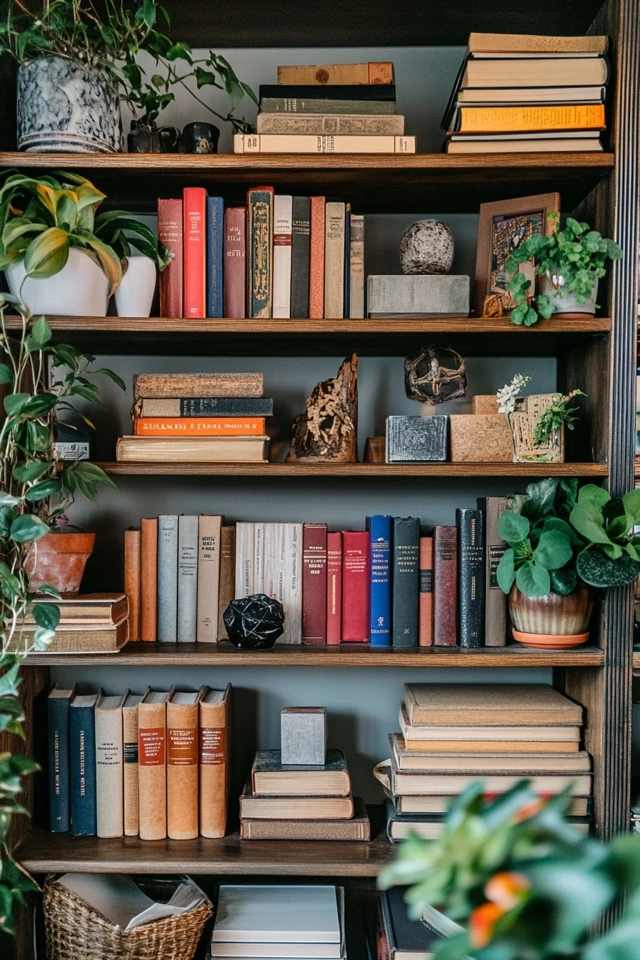
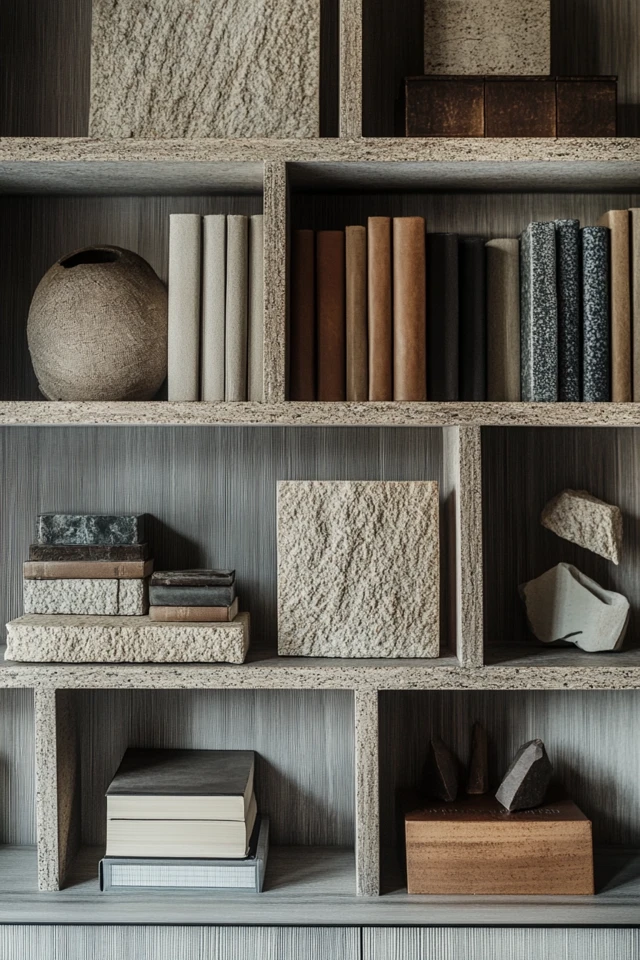
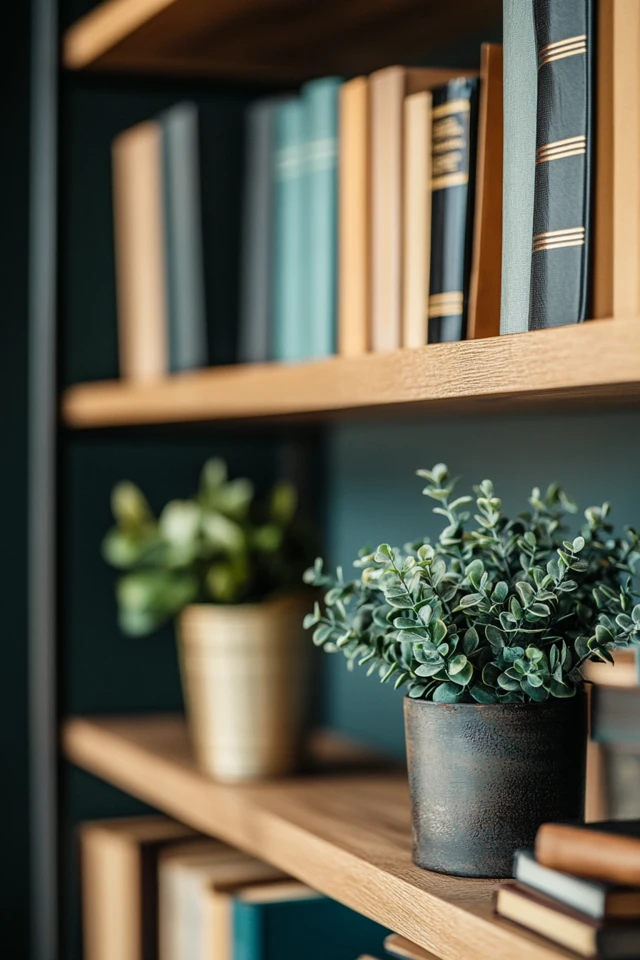
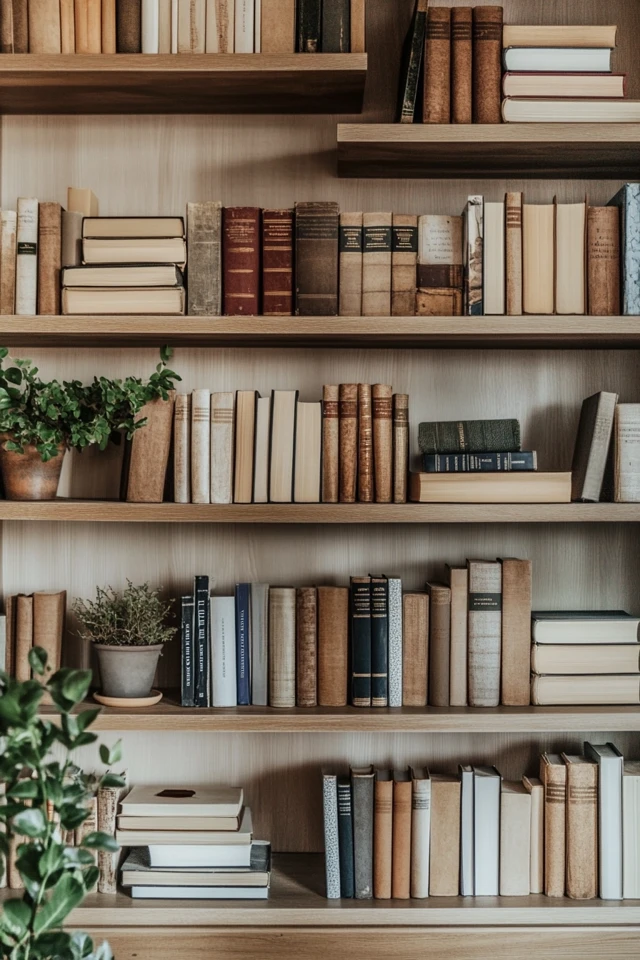
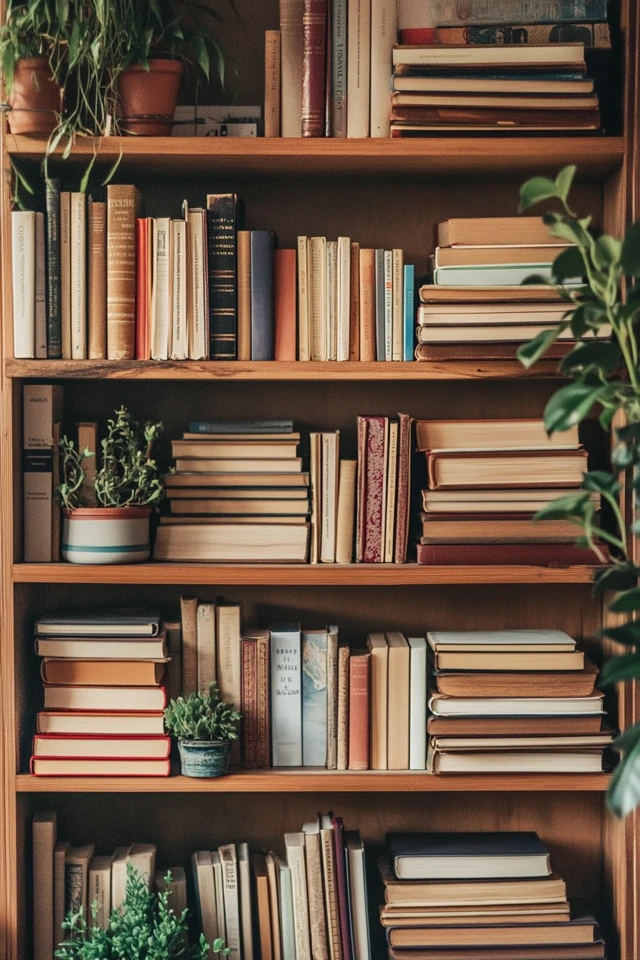

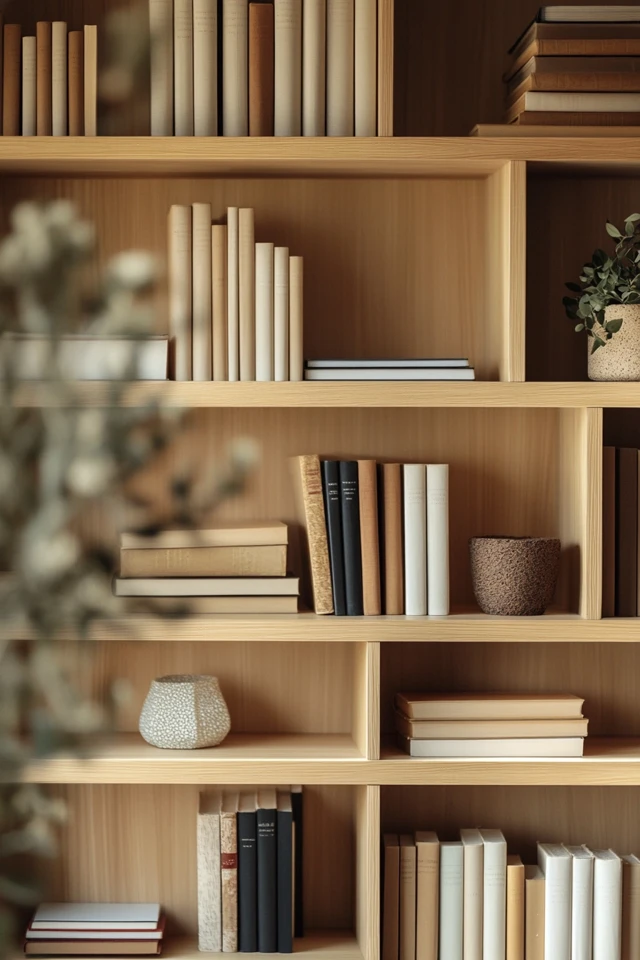
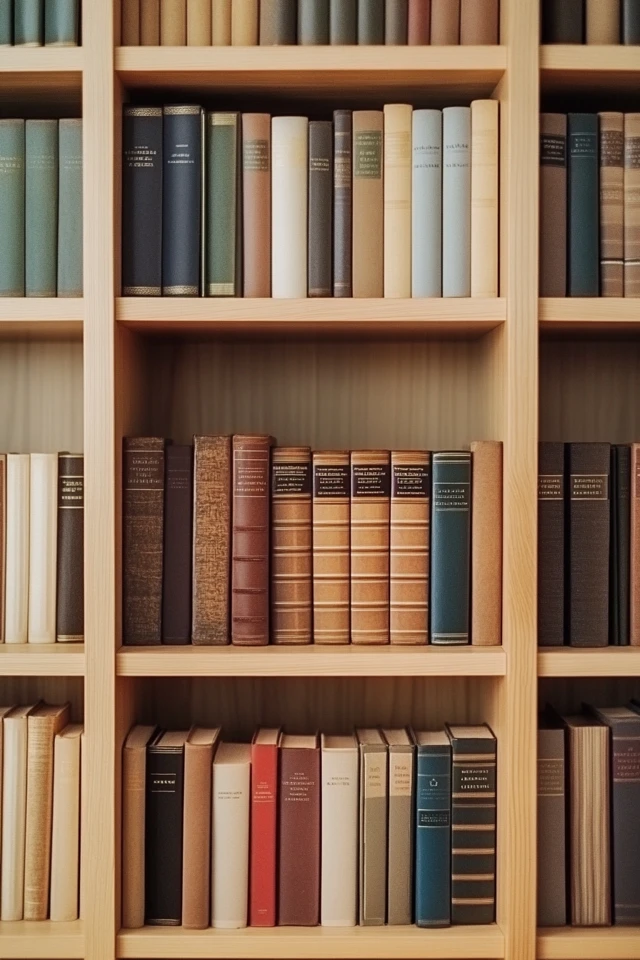
Conclusion
Arranging bookshelves is a fun and creative process that allows you to showcase your personality while enhancing your space. By combining books, decor, greenery, and personal touches, you can turn an ordinary shelf into a visually pleasing display that complements the room’s overall design.
The key is to experiment and find a balance that feels right for you. Don’t be afraid to play with scale, texture, and color until your shelves look just the way you want. Remember, your bookshelf is a reflection of your unique story—make it a space you’re proud to show off!
FAQs
1. How do I style bookshelves without them looking cluttered?
Focus on balance and negative space. Arrange items in groups, leave gaps between clusters, and avoid overcrowding the shelves.
2. Should books be arranged by color or size?
It depends on your preference! Color-coding creates a striking visual effect, while arranging by size gives a more uniform and organized look.
3. How can I decorate bookshelves on a budget?
Use items you already own, like framed photos, small plants, or souvenirs. Thrift stores are also great places to find unique decor on a budget.
4. What’s the best way to incorporate plants into bookshelf decor?
Use small potted plants or trailing vines to add life to your shelves. Place them strategically to balance the overall arrangement.
5. How often should I update my bookshelf display?
You can update your shelves seasonally or whenever you feel like refreshing the space. Regularly cleaning and rearranging can keep them looking polished and intentional.

